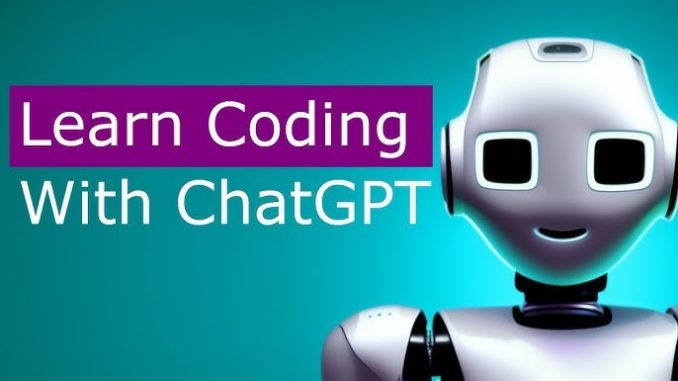
The landscape of education is undergoing a profound transformation, propelled by the relentless march of technological innovation. Among the most exciting and impactful developments is the emergence of artificial intelligence as a personalized tutor, particularly in the ever-critical domain of computer programming. The traditional model of learning to code, often characterized by dense textbooks, crowded classrooms, or even self-directed online courses that can feel isolating, is increasingly being augmented, and in some cases, redefined by AI-powered learning platforms. This shift is not merely an incremental improvement; it represents a fundamental rethinking of how we acquire and master complex skills.
At its core, the appeal of an AI tutor for coding lies in its ability to offer truly individualized instruction, something that even the most dedicated human instructor struggles to achieve with a large cohort of students. Imagine a scenario where every student receives immediate, tailored feedback on their code, not just identifying errors but also explaining the underlying logical flaws in a clear, constructive manner. An AI tutor can analyze a student’s progress in real-time, pinpointing areas of weakness, identifying misconceptions, and then dynamically adjusting the curriculum to address those specific needs. This adaptive learning pathway ensures that learners aren’t held back by concepts they’ve already grasped, nor are they left behind grappling with topics they haven’t yet mastered. For instance, if a student consistently misunderstands the concept of recursion, the AI can present a series of varied examples, offer simplified analogies, or even generate interactive exercises designed to solidify that particular understanding, something a human tutor might only discover after several assignments.
The efficiency gains offered by AI tutors are equally compelling. Human instructors are limited by their time and capacity. They can’t be available 24/7, nor can they instantaneously grade every line of code written by every student. AI tutors, conversely, operate tirelessly. A student struggling with a bug at 2 AM can still receive instant support and guidance. This omnipresence drastically reduces frustration and accelerates the learning cycle. Consider a professional seeking to upskill in Python for data analysis, but whose schedule is erratic due to demanding work commitments. An AI tutor can seamlessly integrate into their unpredictable timetable, providing focused learning modules during brief windows of availability, making the pursuit of new skills far more feasible and less daunting. This flexibility is a significant advantage for busy professionals and lifelong learners.
Beyond individualized feedback and accessibility, AI tutors can also foster a more engaging and less intimidating learning environment. Many aspiring coders, particularly those new to the field, can feel overwhelmed or discouraged by initial difficulties. The fear of asking “stupid questions” in a group setting or the anxiety of public failure can be significant barriers. An AI tutor provides a non-judgmental space for experimentation. Learners can make mistakes, explore different solutions, and iterate on their code without the pressure of external scrutiny. This iterative process, guided by intelligent feedback, is crucial for developing problem-solving skills – a cornerstone of effective programming. The AI can also introduce gamified elements, track progress visually, and offer motivational prompts, transforming what can sometimes feel like a solitary and arduous journey into a more interactive and rewarding experience.
Moreover, AI tutors can democratize access to high-quality coding education. Geographical location, socioeconomic status, or even the availability of skilled human instructors no longer present insurmountable hurdles. An internet connection and a device are often the only prerequisites. This has profound implications for global talent development, allowing individuals in underserved regions to acquire valuable technical skills that can significantly improve their economic prospects. Businesses, too, stand to benefit immensely from this expanded pool of talent. Companies facing a shortage of skilled developers can leverage AI-powered platforms to train existing employees or to quickly onboard new hires, ensuring that their workforce remains competitive and adaptable to evolving technological demands.
However, it is crucial to acknowledge that AI tutors are not intended to completely replace human educators. Rather, they are powerful tools that can augment and enhance the teaching and learning process. The nuances of human communication, the ability to inspire and mentor, and the capacity for deep empathy remain uniquely human attributes. A truly effective learning ecosystem will likely involve a synergistic blend of AI-powered instruction and human guidance, where AI handles the repetitive, data-intensive aspects of tutoring, freeing up human instructors to focus on higher-level conceptual discussions, project mentorship, and fostering a sense of community. The role of the human educator might shift from being the primary deliverer of information to a facilitator, a guide, and a mentor, leveraging AI insights to personalize their interactions with students even further.
In conclusion, the integration of AI tutors into coding education represents a paradigm shift with far-reaching implications. From personalized learning paths and round-the-clock accessibility to a less intimidating learning environment and democratized access to knowledge, the benefits are substantial and multifaceted. For individuals, it means a more effective, engaging, and flexible path to acquiring essential technical skills. For businesses, it translates into a more adaptable and skilled workforce, ready to navigate the complexities of the digital age. As AI technology continues to evolve, the possibilities for enhancing human learning are truly limitless, promising a future where mastering the art of code is more accessible and achievable than ever before.